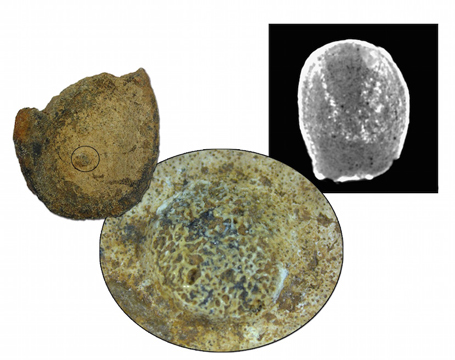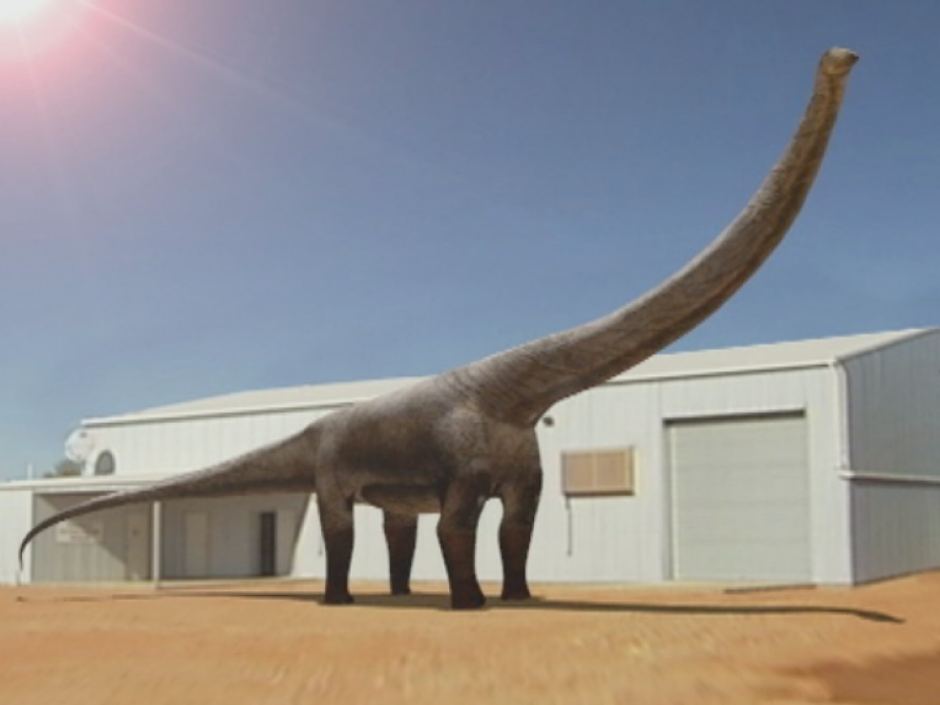Titanosaur Tumours Identified in New Research
Titanosaur Caudal Vertebra Reveals Two Tumours
A study of a titanosaur tail bone, found in Brazil’s southern state of São Paulo has provided scientists with a rare glimpse of dinosaur disease. The caudal vertebra reveals not one but two tumours in the bone of a huge herbivorous dinosaur that roamed this part of South America around 90 million years ago. One tumour has been identified as a homoplastic osteoma, a bone overgrowth, growing over another piece of bone. The second tumour, only revealed when the homoplastic osteoma was subjected to a CT scan, is a hemangioma, a vascular tumour most likely caused by an abnormal collection of blood vessels.
Tumours Identified in 90-Million-Year-Old Dinosaur Bone
Picture credit: Federal University of Rio de Janeiro (UFRJ)
The picture on the left shows the partial centrum of the titanosaur vertebra. The black circle shows the location of the tumour and the central picture is a highly magnified image of this part of the tail bone showing the structure of the homoplastic osteoma. The CT scan image (top right) reveals the location of the second tumour a hemangioma. It is rare to find evidence of such pathology in dinosaur bone, finding two different types of tumour in the same bone is exceptional.
Dinosaur Disease
This is the first documented case of a tumour being found in a dinosaur that is not a hadrosaur. Both tumours were likely to be non-cancerous and benign, the plant-eating dinosaur was probably unaware of them.
Commenting on the discovery, Fernando Barbosa, a doctoral student of geology at the Federal University of Rio de Janeiro stated:
“Finding any disease in fossils is rare. Cancer still is most rare because the majority of them do not leave signals in the bones.”
A number of fossil specimens reveal signs of injury or trauma, the University of Manchester has been undertaking extensive research to examine how dinosaurs recovered from injury. This research has revealed how tough the lives of some dinosaurs were.
To read more about the University of Manchester’s work: Those Very Tough Dinosaurs.
Finding evidence of disease within fossils of dinosaurs is rare, although back in 2009, Everything Dinosaur reported on a study of tyrannosaur fossil bones that revealed evidence of a parasitic infection.
To read more about this: Parasitic Infection in the Tyrannosauridae.
The paper detailing the work carried out on the seventeen centimetre long fossil bone is due to be published in the scientific journal “Cretaceous Research” in the summer. The homoplastic osteoma was discovered when a visual assessment of the bone made by Barbosa and his colleagues identified a small bump in the middle of the centrum. The bump measures just 8.6 mm by 7.5 mm and is described as a “small, bony, button-shaped protuberance.”
Student Fernando Barbosa added:
“We were very lucky finding this because we didn’t have any evidence of the hemangioma. It was diagnosed by the CT scan, which was only possible because we were investigating the radiological appearance of the osteoma.”
Titanosaurs
The Titanosauridae family are members of the Sauropoda, the group of long-necked herbivorous dinosaurs. They were the last type of sauropod to evolve. Likely to have been related to the Jurassic brachiosaurids, they tended to have broader hips than other members of the Sauropoda (hence the wide-gauge reference to titanosaur tracks). With a world-wide distribution, some genera are believed to have been the largest terrestrial animals that ever lived. Estimates of maximum body size vary but weights in excess of seventy-five tonnes and body lengths exceeding thirty metres have been suggested for some exceptionally large individuals.
An Illustration of a Typical Titanosaur
Such bone growths and pathology can provide scientists with a valuable insight into the lives of individual animals, whose remains have been preserved in the fossil record. A few years ago, Everything Dinosaur reported on the discovery of the partial fossilised remains of a huge marine reptile that suffered from arthritis.
To read more about this fossil find: The Westbury Pliosaur – 8 Metres Long Monster with Arthritis.



